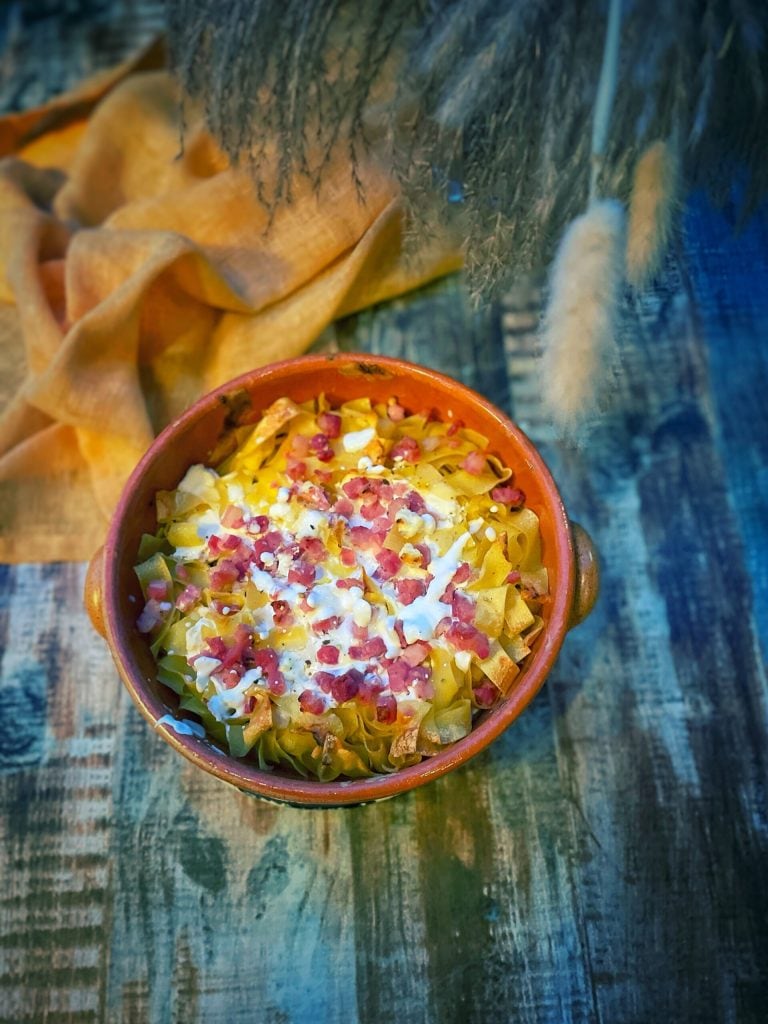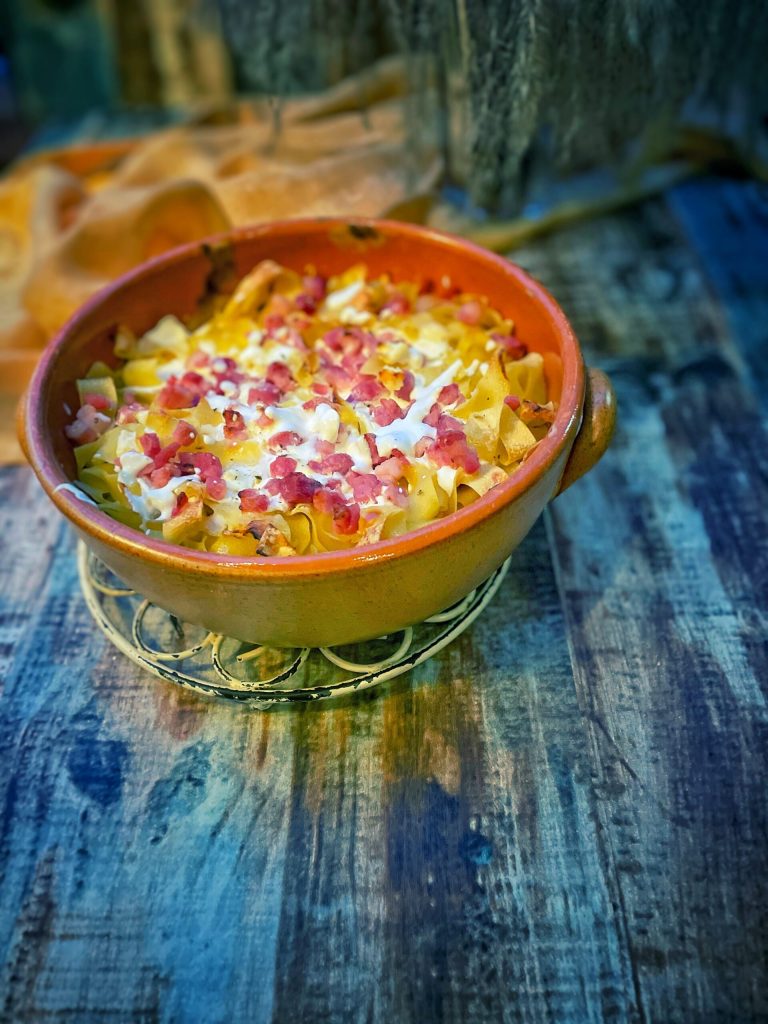The túrós csusza is a traditional dish of Hungarian peasant cuisine, originating in rural areas as early as the 18th-19th century.
It is part of the broader tradition of csusza, which are homemade egg pastas, made with flour and eggs, hand-broken into irregular pieces and baked with various toppings.
The term “csusza” derives from the Hungarian verb csúszni, meaning to slide, probably due to the creamy consistency of the dish when topped with sour cream and cheese.
The túrós csusza, in particular, combines typical ingredients from the rural pantry:
Túró: a drier and grainy cottage cheese type, similar to curd, made from sour milk.
Tejföl: sour cream similar to crème fraîche or smetana.
Bacon or szalonna: smoked pork fat or bacon.
In some regions, it is sprinkled with dill
Originally it was a poor but nutritious dish, often served as a second course after a soup.
Over time, it has become one of the most beloved Hungarian comfort foods, still served today in both homes and typical restaurants.
There are sweet versions, with sugar and raisins, but the savory one with bacon is the most classic.

- Difficulty: Easy
- Cost: Economical
- Preparation time: 8 Minutes
- Cooking methods: Stove, Oven
- Cuisine: Hungarian
- Seasonality: All seasons
Ingredients
- 7 oz csuszatészta (or broken wide tagliatelle)
- 5 oz túró (or cottage cheese)
- 3.5 oz smoked bacon (or bacon – diced)
- 3.5 oz tejföl (sour cream)
- to taste salt
Steps
Cook the pasta in salted water and drain.
Grease the bottom of a baking dish with a bit of bacon fat, add a layer of cooked pasta, then a layer of ricotta, garnish with bacon and sour cream (adjusting salt if necessary).
You can make more layers, but put a portion of pasta on top and the crispy bacon (szalonna).
Bake in a preheated oven, covered, for 10-15 minutes, until the surface is slightly golden and the flavors have blended.
Cut into cubes or slices, garnish with some cold sour cream, and serve hot.

Literary Curiosities…
In “Tragedy” by Zsigmond Móricz, the second course at the wedding was csusza. Even if Kis János no longer found it so.
In the story by Gyula Krúdy “God bless you, happy Vendelins!”, the guest, “the village’s silly lord,” eats it as the last course and in doing so tells Vendelins, the waiter, that even Patience has abandoned him.
In the fairy tale by Ágnes Bálint “What’s New on Futrinka Street?”, cheese csusza is prepared twice.
One of the most characteristic motifs of the novel “Rust Cemetery” by Endre Fejes is eating on special occasions, which the writer introduces several times: “Mária Pék was frying the fish and preparing the ricotta csusza…”
In the work Itthonév by Zsolt Láng there is a section called Túrós csusza.
In the work Itthonév by Zsolt Láng there is a section called Túrós csusza.

FAQ (Questions and Answers)
What is Túró ?
Túró is a Hungarian fresh cheese, similar to quark or cottage cheese, with a crumbly texture and a slightly sour taste. It is a fundamental ingredient in many sweet and savory Hungarian dishes.
Texture:
Túró appears as a mass of curd lumps, similar to cauliflower.
Taste:
It has a pleasantly sour, fresh, and aromatic taste.
Usage:
It is used in dishes like Körözött (a spread) and of course, Túrós csusza.
Túró Rudi:
A snack that first appeared in 1968, consisting of a túró bar covered in chocolate. The name, which is also a registered trademark, means “túró stick”.
Rögös Túró:
A specific type of Túró, the “Rögös túró” (curdy túró), is protected as a Traditional Specialty Guaranteed (TSG) by the European Union. This type of Túró has a well-defined curdy texture and distinctive taste and aroma.

